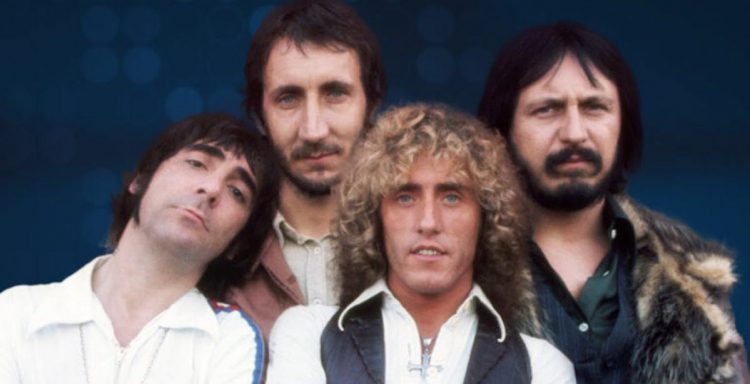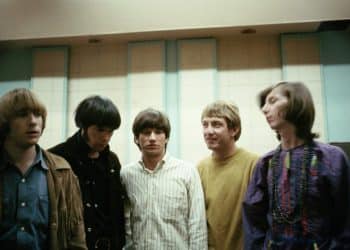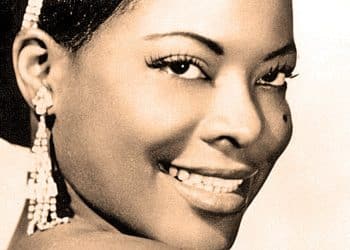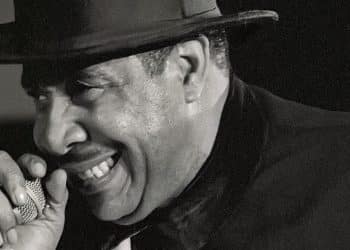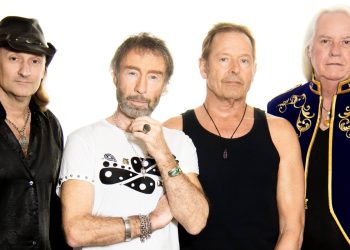The Who, one of the most iconic bands of the 20th century, has left an indelible mark on the music industry. Known for their high-energy performances and anthemic songs, The Who has sold over 100 million records worldwide and has influenced countless musicians across generations. With hits like “My Generation,” “Baba O’Riley,” and “Won’t Get Fooled Again,” The Who has solidified their place in rock and roll history.
In this article, we take a look at the top 20 best songs from The Who. From their early mod rock sound to their later more experimental work, we’ll explore the band’s discography and highlight their most memorable and influential tracks. Whether you’re a lifelong fan or new to their music, this list is sure to bring back memories and inspire you to rock out like only The Who can. So, get ready to crank up the volume and dive into the top 20 best The Who songs of all time!
1. “Substitute” (single, 1966)
“Substitute” is a hit single by the English rock band The Who, released in 1966. Written by guitarist Pete Townshend, the song tells the story of a man who is unable to find love and resorts to using a substitute for the real thing. The song features the distinctive vocals of lead singer Roger Daltrey and a catchy, guitar-driven melody. With its driving rhythm and powerful chorus, “Substitute” was an instant hit and helped to establish The Who as one of the most important bands of the British Invasion. The song’s lyrics and sound captured the restless, rebellious spirit of the times, and it remains a beloved classic of the rock canon to this day.
2. “The Real Me” (Quadrophenia, 1973)
“The Real Me” is a song by the English rock band The Who, featured on their landmark 1973 album Quadrophenia. Written by guitarist and songwriter Pete Townshend, the song tells the story of Jimmy, the album’s protagonist, as he struggles to find his identity amidst the social and cultural upheaval of 1960s Britain. The song is characterized by its driving rhythm, powerful horn section, and the intense vocals of lead singer Roger Daltrey. With its raw energy and deeply personal lyrics, “The Real Me” captures the essence of the album’s themes of youth rebellion, isolation, and the search for self-discovery. The song has since become a fan favorite and a staple of The Who’s live shows, cementing its place as one of the band’s most enduring and iconic tracks.
3. “I Can See for Miles” (The Who Sell Out, 1967)
“I Can See for Miles” is a song by the English rock band The Who, released in 1967 as a single and later included on their album The Who Sell Out. Written by guitarist and main songwriter Pete Townshend, the song is known for its explosive guitar riffs, thundering drums, and soaring vocals from lead singer Roger Daltrey. The lyrics describe a lover who has betrayed the narrator, who claims that he can see “for miles and miles” and that nothing can escape his view. The song’s driving energy and powerful instrumental interludes make it one of The Who’s most dynamic and memorable tracks, and it remains a classic of the psychedelic rock era. “I Can See for Miles” is often cited as an influence on the development of hard rock and heavy metal, and it continues to be celebrated as one of The Who’s greatest achievements.
4. “Baba O’Riley” (Who’s Next, 1971)
“Baba O’Riley” is a song by the English rock band The Who, featured on their 1971 album Who’s Next. Written by guitarist Pete Townshend, the song is characterized by its distinctive synthesizer intro and anthemic chorus, as well as its themes of teenage rebellion, disillusionment, and longing. The song’s title is a combination of two of Townshend’s influences, Meher Baba and Terry Riley, and its lyrics describe a generation searching for meaning and connection in a rapidly changing world. The song’s intricate instrumentation, including Keith Moon’s dynamic drumming and Townshend’s iconic guitar riffs, helped to make it one of The Who’s most enduring and beloved tracks. “Baba O’Riley” has been widely covered and sampled, and it remains a staple of classic rock radio and The Who’s live shows.
5. “I Can’t Explain” (single, 1965)
“I Can’t Explain” is the debut single by the English rock band The Who, released in 1965. Written by guitarist and main songwriter Pete Townshend, the song features the distinctive vocals of lead singer Roger Daltrey and a catchy, guitar-driven melody. The lyrics describe the narrator’s inability to explain his feelings for a girl, and the song’s upbeat energy and infectious chorus helped to establish The Who as one of the most exciting and innovative bands of the British Invasion. The song’s distinctive guitar riff and powerful drumming, courtesy of the late Keith Moon, have made it a favorite among fans and a staple of The Who’s live shows. “I Can’t Explain” was a breakthrough hit for the band and helped to pave the way for their future success and influence on rock music.
6. “See Me, Feel Me” (Tommy, 1969)
“See Me, Feel Me” is a song from The Who’s iconic rock opera Tommy, released in 1969. Written by guitarist and main songwriter Pete Townshend, the song is a climactic moment in the story of Tommy, the deaf, dumb, and blind boy who becomes a messianic figure to his followers. The song’s lyrics implore the listener to “see” and “feel” the narrator’s message of spiritual enlightenment and connection. The song’s soaring melody and powerful vocals, delivered by lead singer Roger Daltrey, have made it a fan favorite and a staple of The Who’s live shows. “See Me, Feel Me” has been covered by numerous artists and featured in films and television shows, cementing its status as one of the most enduring and impactful songs of The Who’s career.
7. “Behind Blue Eyes” (Who’s Next, 1971)
“Behind Blue Eyes” is a song by The Who, featured on their seminal 1971 album, Who’s Next. Written by guitarist and main songwriter Pete Townshend, the song features a hauntingly beautiful melody and introspective lyrics that explore the emotions of a troubled protagonist who is struggling with feelings of betrayal and disillusionment. Lead singer Roger Daltrey’s emotive delivery of the lyrics, accompanied by the band’s powerful instrumental backing, creates a poignant and timeless piece of music that has resonated with audiences for decades. “Behind Blue Eyes” has been covered by numerous artists and featured in films and television shows, cementing its status as one of the most enduring and impactful songs of The Who’s career.
8. “Pinball Wizard” (Tommy, 1969)
“Pinball Wizard” is a song by The Who, featured on their landmark 1969 rock opera, Tommy. Written by guitarist and main songwriter Pete Townshend, the song tells the story of a deaf, dumb, and blind boy who becomes a pinball champion, with the lyrics describing his incredible skills on the machine. The song’s catchy melody and memorable lyrics, as well as its iconic guitar riff, have made it one of The Who’s most beloved and enduring tracks. Lead singer Roger Daltrey’s powerful vocals, coupled with the band’s dynamic instrumentation, create an electrifying and anthemic piece of music that has been covered and sampled by numerous artists in the decades since its release. “Pinball Wizard” remains a fan favorite and a staple of The Who’s live shows, as well as a testament to their enduring legacy as one of the greatest rock bands of all time.
9. “Love, Reign o’er Me” (Quadrophenia, 1973)
“Love, Reign o’er Me” is a powerful and emotional song by The Who, featured on their 1973 rock opera, Quadrophenia. Written by guitarist and main songwriter Pete Townshend, the song explores themes of loneliness, isolation, and spiritual redemption, with lead singer Roger Daltrey’s raw and passionate vocals capturing the intensity of the lyrics. The song’s soaring chorus, backed by the band’s signature wall of sound, creates a cathartic and transcendent musical experience that has become one of The Who’s most beloved and enduring tracks. “Love, Reign o’er Me” has been covered by numerous artists and featured in films and television shows, cementing its status as a classic of rock music and a testament to The Who’s legacy as one of the greatest bands of all time.
10. “Anyway, Anyhow, Anywhere” (single, 1965)
“Anyway, Anyhow, Anywhere” is a song by The Who, released as a single in 1965. Written by guitarist Pete Townshend and lead singer Roger Daltrey, the song is notable for its innovative use of distorted guitar feedback and proto-punk energy, as well as its rebellious lyrics and infectious pop hooks. The song’s driving rhythm and catchy chorus, combined with Townshend’s explosive guitar work and Daltrey’s dynamic vocals, create a high-energy and electrifying piece of music that helped to define The Who’s early sound and influence the development of rock music in the 1960s and beyond. “Anyway, Anyhow, Anywhere” remains a fan favorite and a testament to The Who’s pioneering spirit and enduring legacy as one of the greatest bands in rock history.
11. “The Kids Are Alright” (My Generation, 1965)
“The Kids Are Alright” is a classic rock song by The Who, released on their debut album “My Generation” in 1965. Written by guitarist Pete Townshend, the song celebrates the youthful energy and rebellious spirit of the British Mod subculture of the 1960s, with its catchy guitar riffs and sing-along chorus capturing the exuberance and optimism of youth. The song’s lyrics and upbeat melody have made it a timeless anthem for generations of rock fans, and its iconic status was further cemented by its use as the theme song for the documentary film of the same name about The Who. “The Kids Are Alright” remains a beloved classic of rock music, and a testament to the enduring appeal of The Who’s pioneering sound and rebellious spirit.
12. “5.15” (Quadrophenia, 1973)
“5.15” is a rock song by The Who, appearing on their 1973 album “Quadrophenia”. Written by guitarist and main songwriter Pete Townshend, the song tells the story of Jimmy, the protagonist of the album, as he takes a train ride to Brighton to escape his troubles and attend a Mod rally. The song’s driving rhythm, catchy chorus, and soaring vocals by frontman Roger Daltrey create a sense of urgency and excitement, mirroring the thrill of riding on a train and the excitement of being part of a subculture. The song also features a memorable brass section, adding to the grandeur and drama of the piece. “5.15” is widely regarded as one of The Who’s best songs, showcasing the band’s ability to combine intricate storytelling with explosive rock music, and a testament to their enduring legacy as one of the greatest rock bands of all time.
13. “Young Man Blues” (Live at Leeds, 1970)
“Young Man Blues” is a cover song originally written by blues musician Mose Allison, but it was famously performed by The Who on their 1970 live album “Live at Leeds”. The song is a high-energy blues rock number with a memorable riff and raw vocals by frontman Roger Daltrey. The song’s lyrics explore the rebellious and restless nature of youth, a theme that resonated strongly with The Who’s young and passionate fanbase. The band’s live version of the song is particularly notable for its explosive guitar solos by Pete Townshend and powerful drumming by Keith Moon, showcasing the band’s incredible musical talent and their ability to put on an electrifying live show. “Young Man Blues” has since become a beloved classic in The Who’s catalog and a testament to their mastery of blues rock and their impact on the development of rock music as a whole.
14. “Who Are You” (Who Are You, 1978)
“Who Are You” is the title track of The Who’s 1978 album of the same name. The song features a memorable intro with synthesizer and guitar, followed by an instantly recognizable drum beat from Keith Moon. The lyrics were written by Pete Townshend and were inspired by an incident where he was mistaken for a different person by a police officer who was investigating him for public intoxication. The song reflects on the struggle for identity and purpose in the midst of the rockstar lifestyle, with lyrics like “I woke up in a Soho doorway, a policeman knew my name / He said ‘You can go sleep at home tonight if you can get up and walk away.'” The song’s chorus features Roger Daltrey’s powerful vocals and the iconic repetition of the song’s title. “Who Are You” became a hit for the band and has since become one of their most popular and recognizable songs.
15. “Blue, Red and Grey” (The Who by Numbers, 1975)
“Blue, Red and Grey” is a song by The Who from their 1975 album “The Who by Numbers.” The song features lead vocals by guitarist Pete Townshend and is notable for its stripped-down acoustic sound. The song’s lyrics explore themes of aging and self-reflection, with Townshend singing about the process of growing old and losing one’s youthfulness. The song’s simple, catchy melody is driven by Townshend’s acoustic guitar playing, and the track also features piano and harmonica. Despite being a relatively minor hit for The Who, “Blue, Red and Grey” has become a fan favorite and is considered one of the standout tracks from “The Who by Numbers.”
16. “Pictures of Lily” (single, 1967)
“Pictures of Lily” is a classic song by The Who, released as a single in 1967. The song tells the story of a young man who has trouble sleeping and his father gives him a picture of a woman named Lily to help him sleep. The young man becomes infatuated with the picture and falls in love with Lily, even though she is only a figment of his imagination. The song features the signature Who sound, with powerful guitar riffs and Keith Moon’s explosive drumming. It also includes a catchy melody and memorable lyrics. “Pictures of Lily” was a commercial success for The Who, reaching the top ten in the UK charts, and remains a beloved classic in their catalog.
17. “The Song is Over” (Who’s Next, 1971)
“The Song is Over” is a ballad from The Who’s iconic album “Who’s Next” released in 1971. It is a moving song with emotional lyrics, written by Pete Townshend, that are about the inevitability of change and the passing of time. The track features the delicate piano playing of Nicky Hopkins and a beautiful vocal duet between Roger Daltrey and Townshend. The song starts off with a melancholic piano intro and progresses into a powerful crescendo with Daltrey belting out the chorus “But the song, it is no longer mine” and Townshend adding his own harmonies. The song ends with a powerful instrumental section where each member of the band has a chance to shine. “The Song is Over” is a powerful reminder of The Who’s immense musical talent and their ability to create music that touches the heart and soul of their listeners.
18. “I’m a Boy” (single, 1966)
“I’m a Boy” is a song by the British rock band The Who, released as a single in 1966. It tells the story of a young boy named Billy who is forced by his mother to dress and act like a girl, leading to confusion about his gender identity. The song has a catchy, upbeat melody and features powerful vocals from lead singer Roger Daltrey. It showcases the band’s early sound, with a mix of rock, pop, and mod influences, and contains some of their signature harmonies and guitar riffs. The song was a commercial success and helped to establish The Who as one of the most innovative and influential bands of the 1960s. It remains a fan favorite and a staple of the band’s live performances.
19. “My Generation” (My Generation, 1965)
“My Generation” is the iconic opening track of The Who’s debut album of the same name, released in 1965. The song’s rebellious and anti-establishment lyrics, delivered with Pete Townshend’s famous power chords and Roger Daltrey’s snarling vocals, quickly made it a youth anthem of the 1960s. The track’s most memorable moment is its chorus, which famously proclaims “Hope I die before I get old.” The song is often cited as one of the most important and influential rock songs of all time and has been covered by numerous artists over the years. Its rebellious spirit and memorable chorus continue to resonate with generations of music fans, cementing its place as one of The Who’s most enduring and beloved tracks.
20. “Won’t Get Fooled Again” (Who’s Next, 1971)
“Won’t Get Fooled Again” is a powerful and iconic song from The Who’s 1971 album “Who’s Next”. It opens with a signature synthesizer riff before building into a driving rock anthem with Pete Townshend’s explosive power chords and Keith Moon’s thundering drum fills. The song’s lyrics express a disillusionment with political and social systems, encapsulating the frustration and anger of a generation of young people who had grown up in the turbulent 1960s. The climactic scream of “Meet the new boss, same as the old boss” has become one of the most memorable moments in rock history. “Won’t Get Fooled Again” remains a timeless classic and a rallying cry for those seeking change and revolution.
